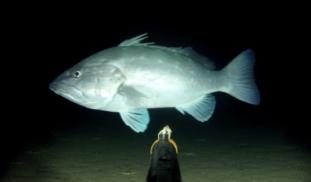Please wait...
About This Project
Nearshore deepwater fisheries are expanding in the Caribbean as coastal fisheries decline. Because deepwater snappers and groupers grow more slowly and mature later than their shallow-water counterparts, they are more vulnerable to overexploitation. We know very little about the biology of these deep-dwelling fishes. We will use a novel camera and hydrophone to study spawning of these species in Belize and Honduras to determine when and where spawning takes place.



